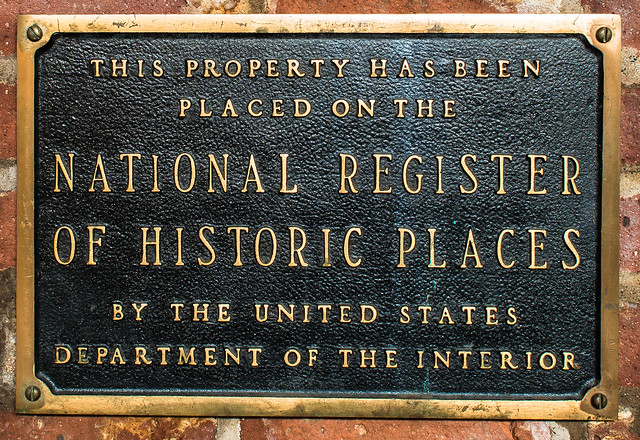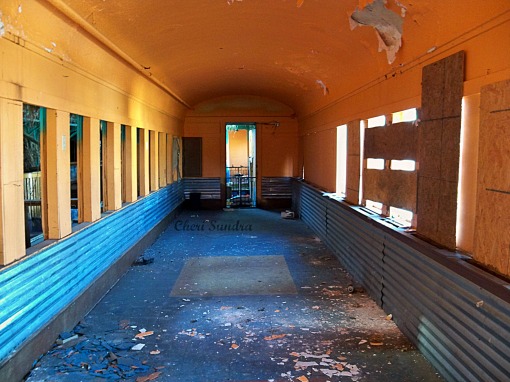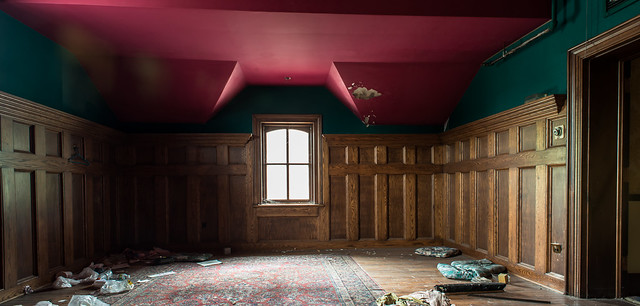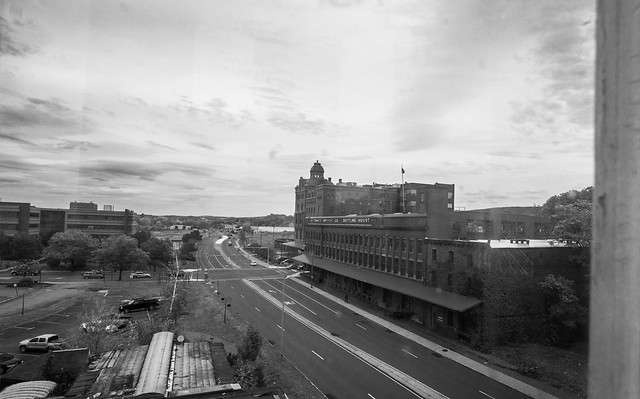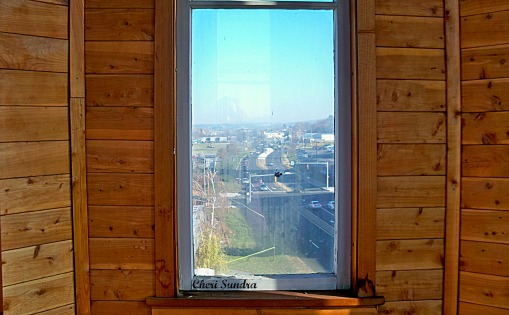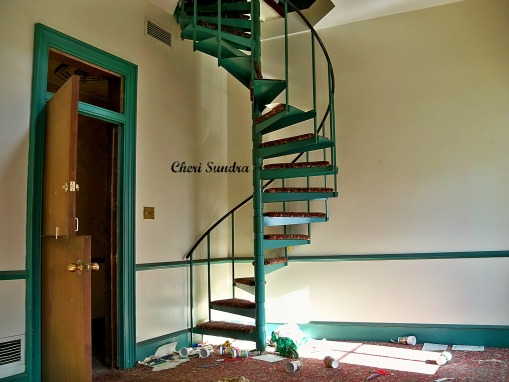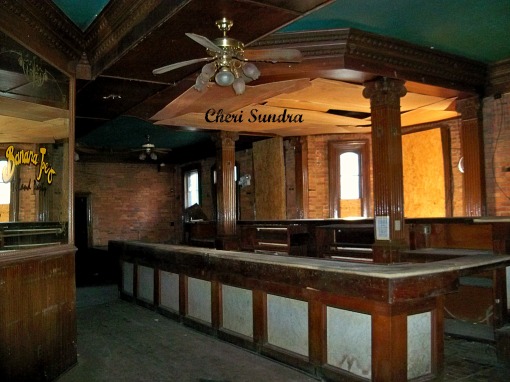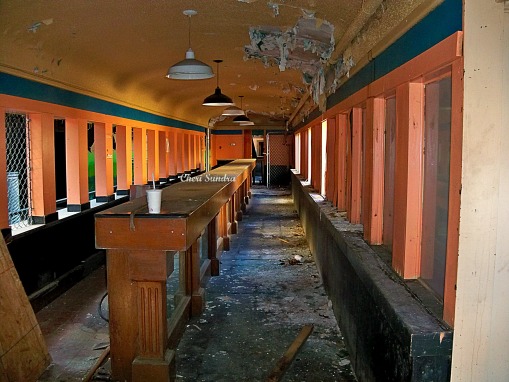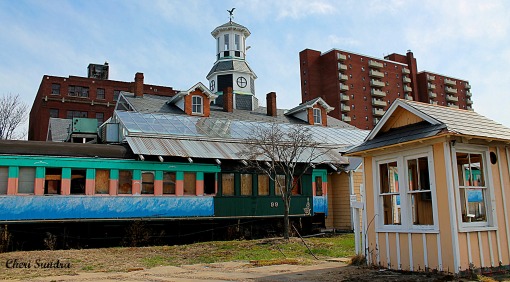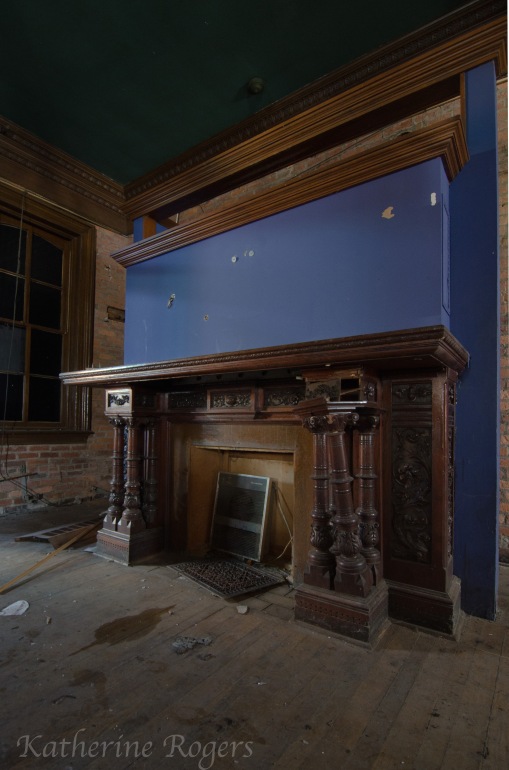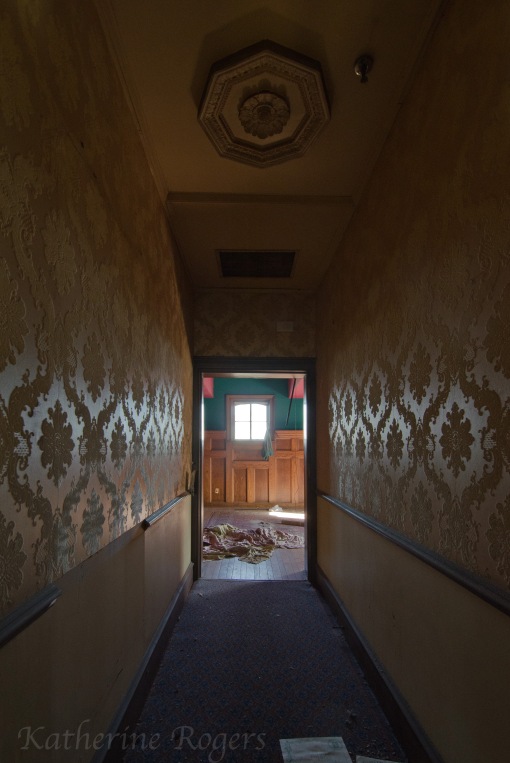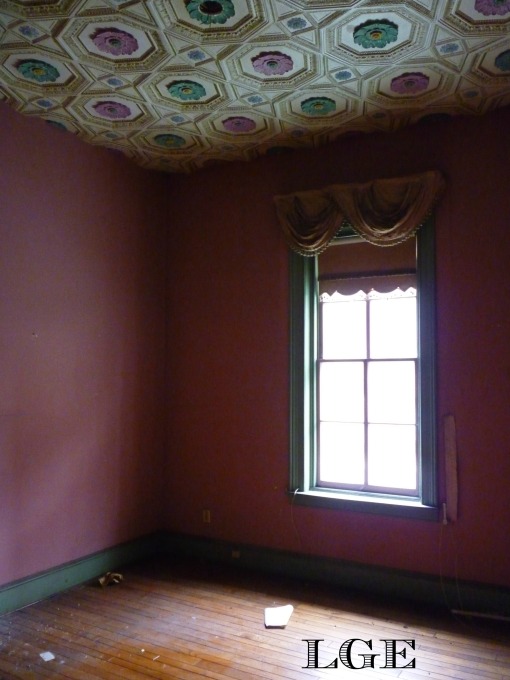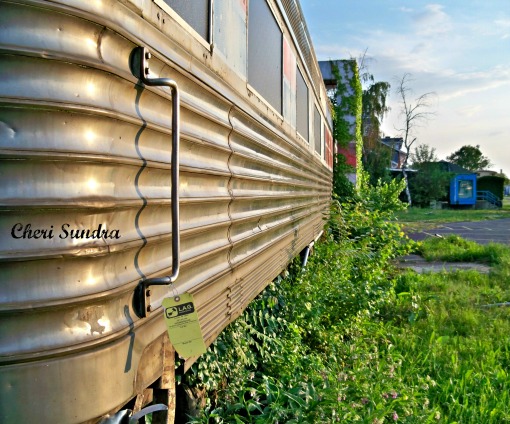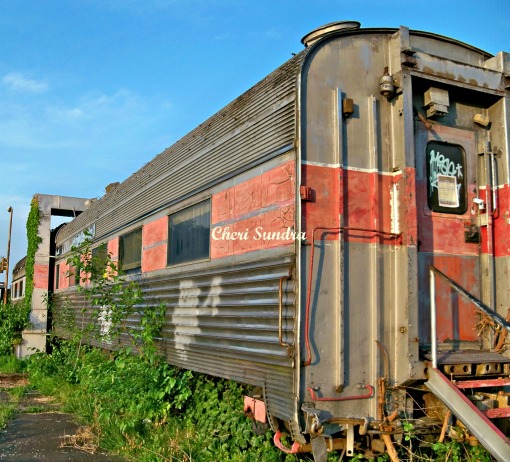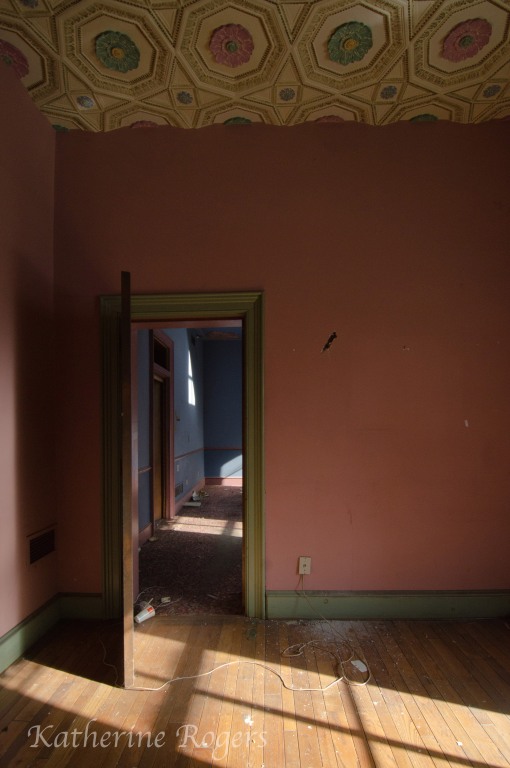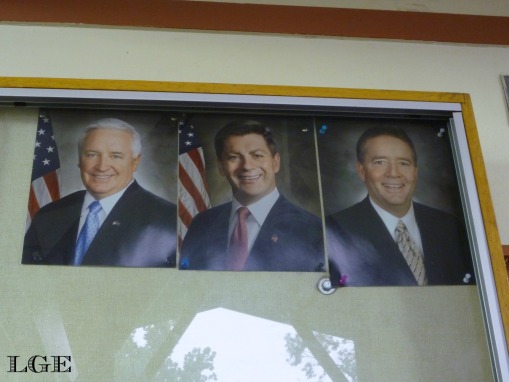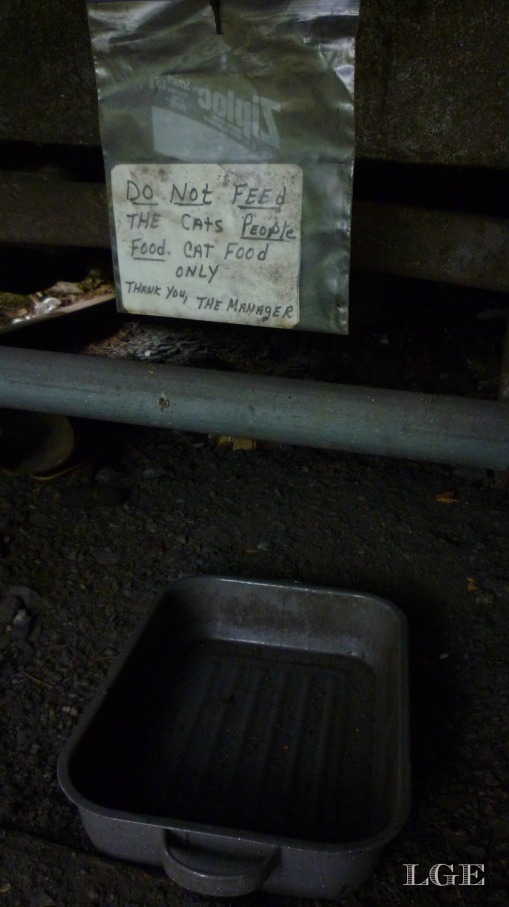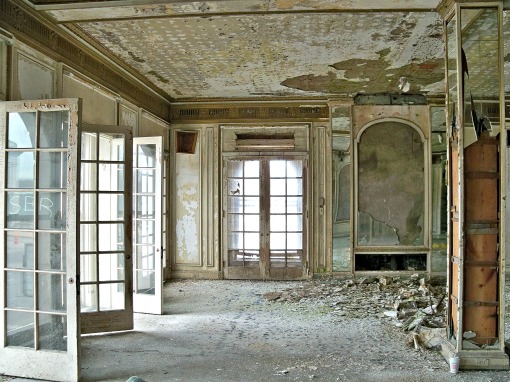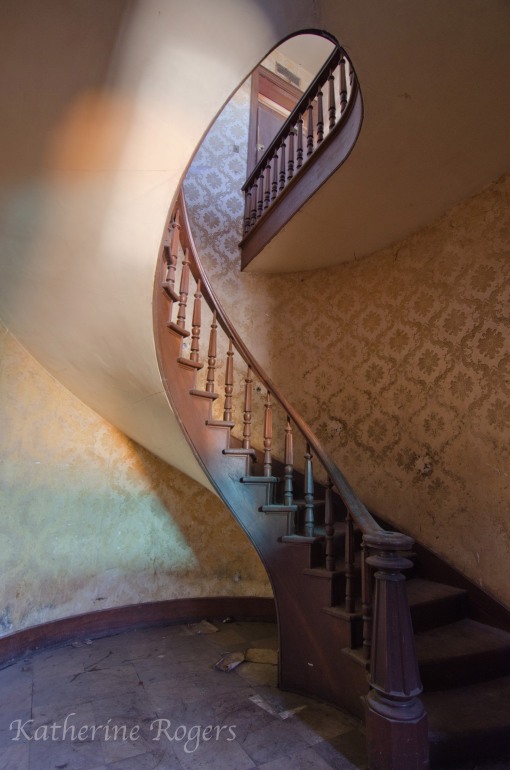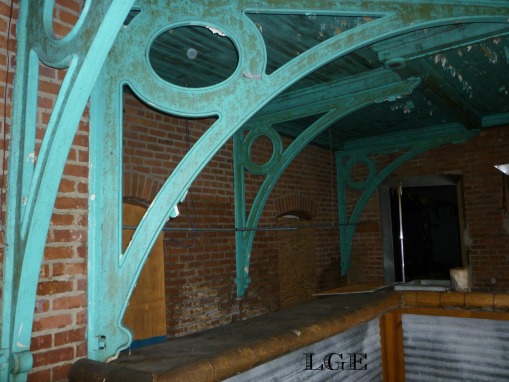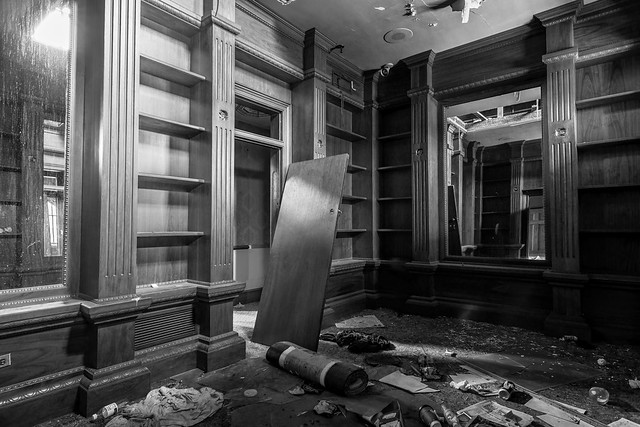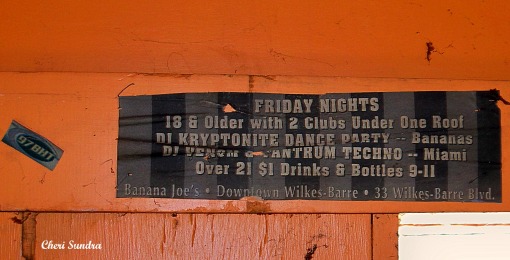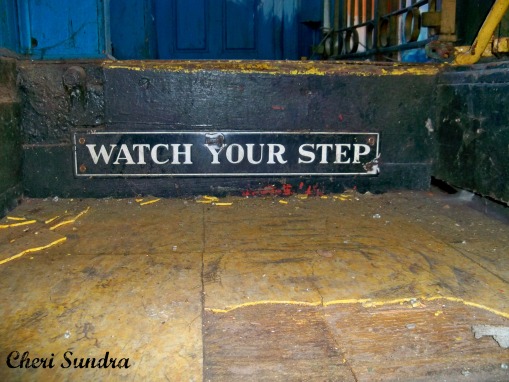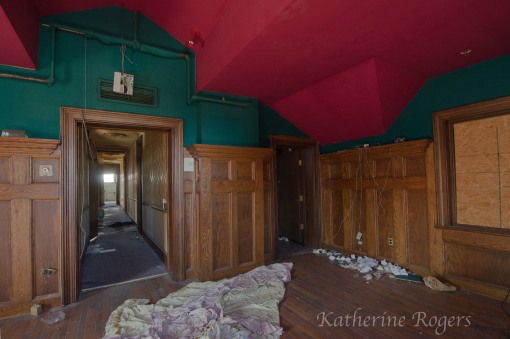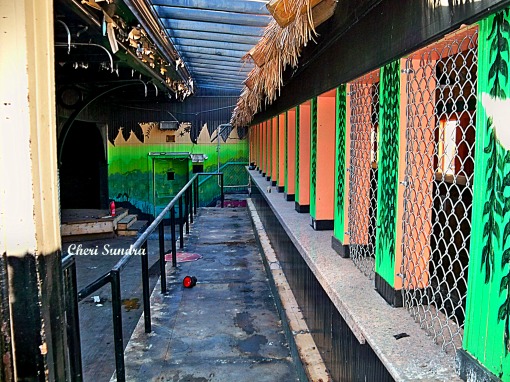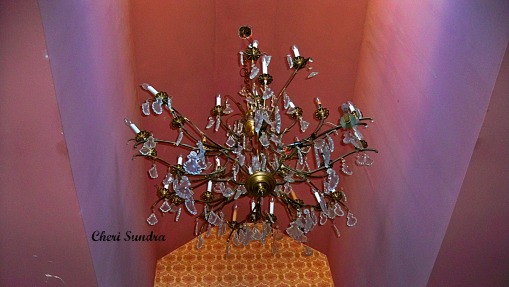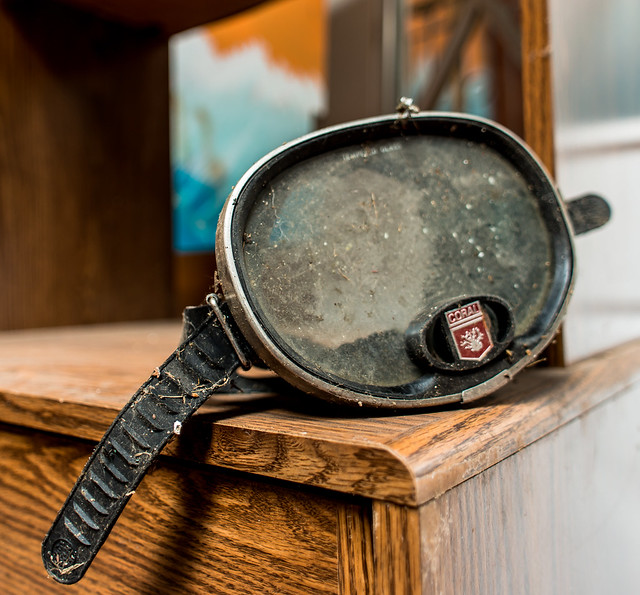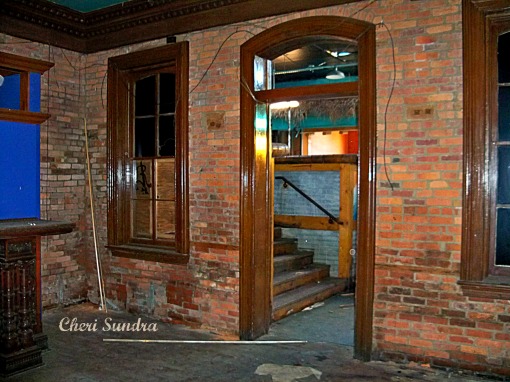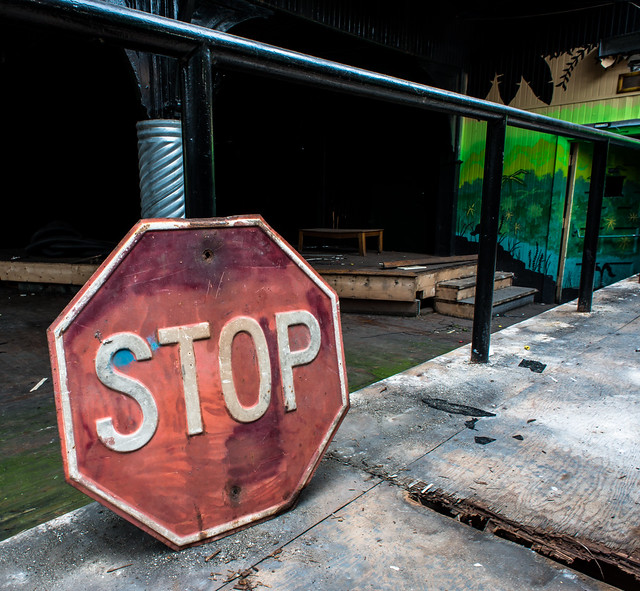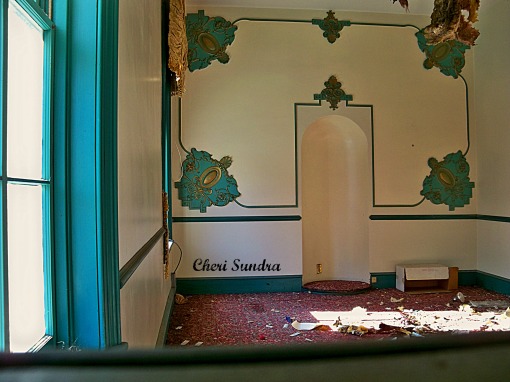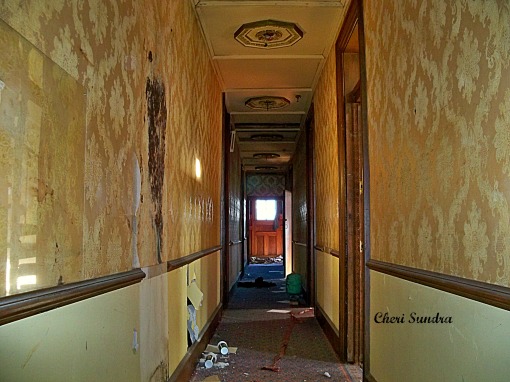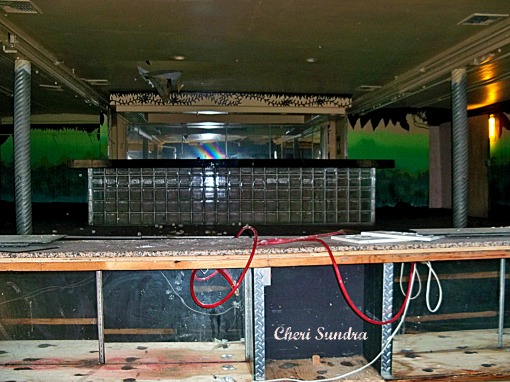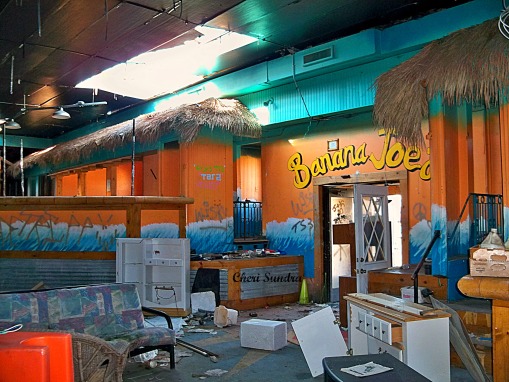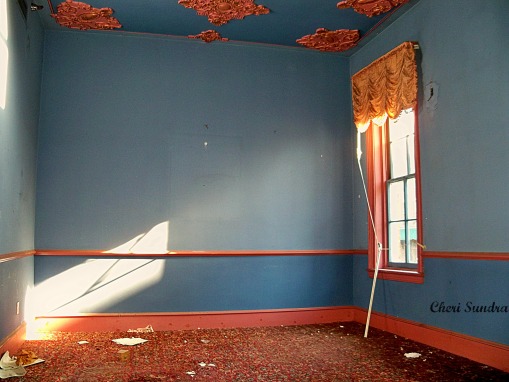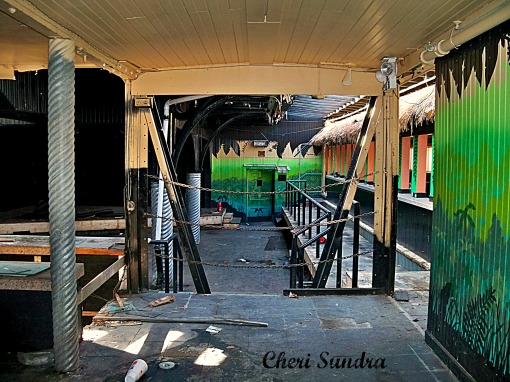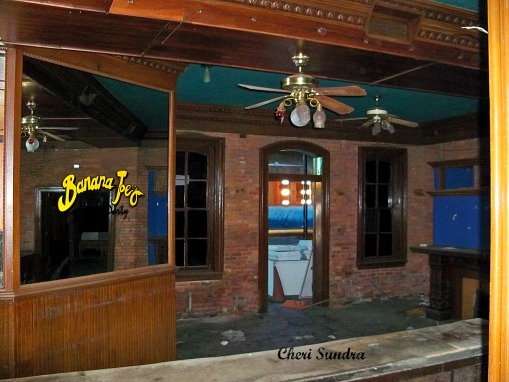A Resurrection Reversed: The Playboy Bunnies & The Death(s) of the Wilkes-Barre Train Station (Part 2)
Photo courtesy of George Foster
(If resurrection is the concept of coming back to life after death, how do you measure the success, or failure, of one?)

Wilkes-Barre Train Station 2014
Some townspeople, in a “has-seen-better-days” place named Wilkes-Barre, Pennsylvania, are looking for someone to save their tragic little train station……again. This is unquestionably a noble goal. But any potential philanthropists, preservationists and “do-gooders-in-general” should be forewarned that this is a community with a history of its own—a history that includes squandering the gift of historic resurrection.
Allow me to photographically illustrate a story that will break your heart. It is a tale about a man with a dream, who invested millions of dollars, in a labor of love, to give the gift of history and heritage back to his hometown.
I’m talking about an old-school, self-made, “no-government-grant-money-needed”, community philanthropist with a vision for the future, who spent his own cash to restore a vacant and quickly deteriorating historical landmark.
What did that community do with the living piece of history that he so lovingly and generously invested in for them to enjoy for years to come?
In an act of betrayal, the town just complacently watched, as the property reverted back into a state of abandonment and ruin once again, very shortly after their benefactor entrusted the train station’s care to other community members. This is a frightening tale about what can happen to history when commercial non-profitability and loss of accountability in local government collide.
Let’s begin our story right here:

Once upon a time, many years ago…..in 1974, to be exact…..there was a historic little train station who had seen much better days. After playing a major role in the prosperous years of the fair city that it calls home (See Part 1), this particular train station was viewed as an abandoned building merely existing in a state of ruin, and standing in the way of “progress”. It was nothing but a hopeless abandonment, plagued by vandals, and slated for demolition. The Luzerne County Redevelopment Authority planned to remove the structure, since it was in the direct path of an extension planned to make way for a downtown automobile traffic distributor—whatever that is! But the community stepped up and got involved in trying to rally support for this endangered landmark.
First, there was a Senator named Hugh Scott who urged local communities in Pennsylvania to try to save old rail depots throughout the state so they could serve as museums or something useful.
Then people began writing letters and articles urging the community to save Wilkes-Barre’s little monument to the halcyon days of passenger train service, which usually began with statements such as:
“No longer the trim, ornate passenger station it once was back in the hey-day of rail travel in Wyoming Valley, the Central Railroad depot now is a run-down, dilapidated structure; its boarded-up lower floors, broken windows and mouldering (sic) cupola stand as mute evidence of Wilkes-Barre’s historic past.”
While that newspaper blurb sounds eerily like it could be pulled from 2014, it actually ran in the September 28, 1974 issue of the Wilkes-Barre newspaper! Forty years ago, this community was looking at the SAME train station, in the SAME condition that it sits today, wondering what to do with this magnificent piece of history that sat in ruins. What has transpired in Wilkes-Barre over those four decades is a tale of hope, transformation, and then a decline that should make the business leaders and elected officials in that community hang their heads in shame.
In 1974, their local newspaper was saying things like:
“Time is running out for the old Central Railroad of New Jersey passenger station, whose 106 years of history cover the major span of the once great railroad industry, second only to anthracite mining as the greatest employer in Wyoming Valley. Now, vacant and deteriorating rapidly since the shutdown of all CNJ service in Wilkes-Barre on March 31, 1972, the historic building awaits its fate. “
What happened next was nothing short of miraculous in the world of historical preservation! It was almost inconceivable that anyone would really be interested in salvaging such a deteriorating structure, especially since its small size mitigated against any otherwise major redevelopment that could grace the seven acre tract of land that it sits upon.
Photo courtesy of George Foster
But against all odds, amazing things happened! The Greater Wilkes-Barre Jaycees took on the responsibility to get the ball rolling. They organized a “Save Our Station” committee and embarked on a quest to secure “historical landmark” status for the structure. They didn’t have the resources or knowledge required to do the restoration job themselves, but they were successful in having that little train station placed on the National Register of Historic Properties and the Pennsylvania Register of Historic Sites and Landmarks. Now all that the story needed was a hero to save the day! And that’s when a man named Marvin Roth came to the rescue.
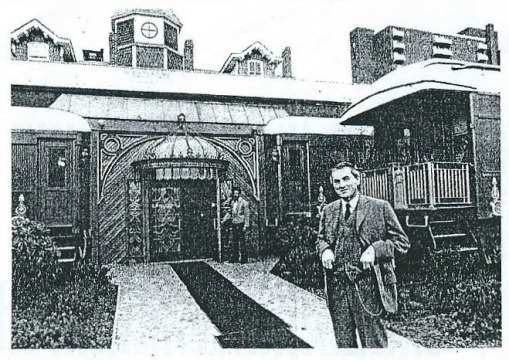
Marvin Roth & His Restored Train Station
Mr. Roth was a novelty and toy wholesaler who grew up a block from the train station, watching the trains come and go. He decided to re-create the hustle and bustle of the busy rail terminal, without involving actual train travel and the end result was a unique motel, restaurant and bar experience.
“I didn’t want the railroad to disappear entirely from Wilkes-Barre, and this is my way of keeping it alive,” he said in a 1987 Los Angeles Times interview about his project to convert the abandoned station into a useful parcel of real estate once again, as a gift to his economically struggling hometown.
Before Mr. Roth stepped up, the elegant brick station had been last used by the Central Railroad of New Jersey, successor to the old Lehigh, Lackawanna, Delaware & Hudson, and Pennsylvania railroads that served the area into the early 1960s after Wilkes-Barre’s coal mines, flooded by the Susquehanna River, stopped operating.
Passenger rail service, which started there in 1843, ended July 1, 1963. Next the station was subjected to the ravages of time and weather, in addition to the day-to-day destruction inflicted by vandals who shattered glass, destroyed moldings, and pilfered valuable and difficult–to-replace originals. The structure was so devastated in the 1972 flood caused by tropical storm Agnes that the local Redevelopment Authority planned to raze it.
Marvin Roth purchased the train station in late 1977 and embarked upon the kind of successful redevelopment project that everyone hopes to achieve as an end result. He filled the tracks with dining, parlor and sleeping cars, cabooses and freights, using them as a means to add extra commercial space to the tiny train station. Finding the old railroad cars was easy, but getting them into Wilkes-Barre, where track had been torn up, proved to be quite difficult.
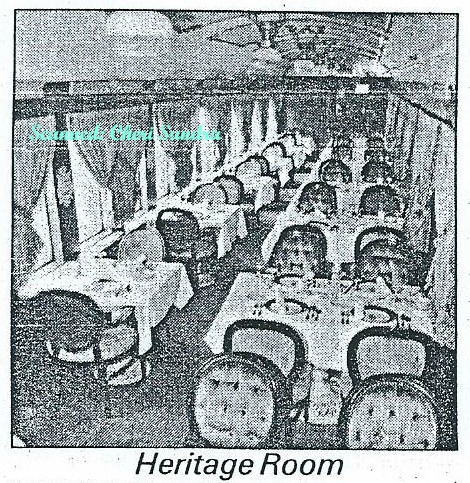
Marvin Roth Restored Railroad Car
“We had to lay track from the site to some freight lines still operating,” Mr. Roth told the LA Times. “That’s how we were able to move a private coach once used by Henry Flagler, the owner of the old Florida East Coast Railway and a partner of John D. Rockefeller.”
In local newspaper interviews, Marvin Roth was hailed for his “restless search for historically significant artifacts” to place throughout the complex, which included the acquisition of an enormous hand carved sideboard from the Vanderbilt home to be used as the focal point of the lobby. And there was detailed work underway on the train station’s second floor where a cabinet maker from Israel—Nissim Rabbe—labored for months in a room named the “Library Room” , creating walls made out of fine, hand carved walnut.
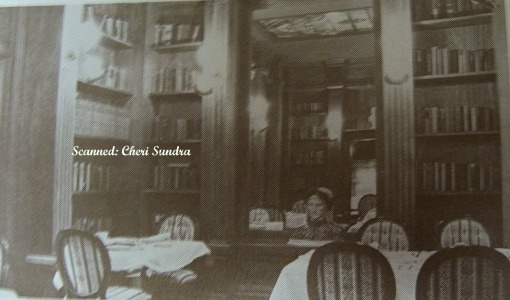
Marvin Roth Library Room
Photo courtesy of Katherine Rogers
The adjacent room, named the “Billiard Room” because of its large billiard table, was another dining area decorated with stately oak. Newspaper articles went to great lengths to describe how “little expense was spared in selecting appointments, furnishings and decorations to be consistent with the Victorian era in this non-rolling railroad complex.”
“Billiard Room” Post-Roth-Restoration
Photo courtesy of George Foster
In an interview about his restoration project for the Revel R.R. Resister, Roth “dwelled on his commitment to authenticity in the restoration—even to the tin and copper roof being replaced with all copper.”
In 1979, the local paper declared:
“Perhaps the grandest part of the station is the cupola; Roth said before restoration, the cupola had no access. “When we got up here for the first time we found that the only others ever up here were the pigeons”, mused Roth. From the cupola, one is afforded a grand view of the city.”
The View–Photo courtesy of George Foster
Mr. Roth continued, “Also, when standing at the top of the grand structure, the new clean slate and copper roofing on the station is eye-catching. “–Citizens’ Voice, April 27, 1979

Sign For Potential Copper Thieves, Post-Roth- Restoration
(Note to readers: Early in 2013, thieves successfully removed the copper roofing material.)
Roth described the cupola as “pure gingerbread” because it served no purpose, but anyone entering it would be unlikely to forget it because it was completely lined with cedar wood.
Marvin Roth did considerable research to find out what he needed to restore the former New Jersey Central Railroad Station. He enjoyed spending the time, money and effort that he put into the project. In a 1979 interview, Mr. Roth said that when he completed his restoration project, that the station would be the showplace of Northeast Pennsylvania. “The bottom line of this project is that it’s not profit oriented. And I look upon this project as being owned by the people of Wilkes-Barre.” OWNED by THE PEOPLE of Wilkes-Barre….
 Marvin Roth checking details
Marvin Roth checking details
Roth’s efforts paid off tremendously and the site quickly became a hot-spot enjoyed by community members of all ages. In January of 1981, The Citizens’ Voice, in a recurring section called “Up with Teens” declared, “The Station is Alive”!
The article went on to describe The Gandy Dancer Room, which featured both live bands and DJs. The venue was fully equipped with lights, sirens and a moving iron horse where, “teenagers danced disco to the latest tunes.” And as Generation X-ers may recall today, “There was a cover charge for the disco when a band played, and you had to be 18 to enter.”
There were pinball machines and Space Invaders if you didn’t like to dance. Or you could have a nice quite meal in one of the box cars, which were neatly designed like they were during the Golden Era of Railroad travel. Each car had a dining table, mirror sink and some even had a pull-out bed.
Or patrons could choose one of the dining areas upstairs. The most popular room was the “Bullet Hole Room” which was rumored to have the actual mirror Jesse James was standing in front of when he was gunned down by the Ford brothers because of the $10,000 reward that was on his head. The crack in the mirror is said to be from the bullet that killed him.
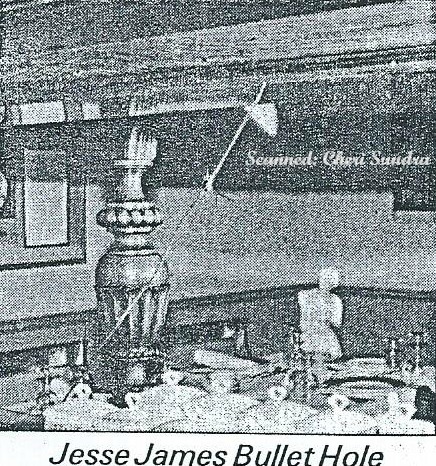
The Marvin Roth “Bullet Hole Room”
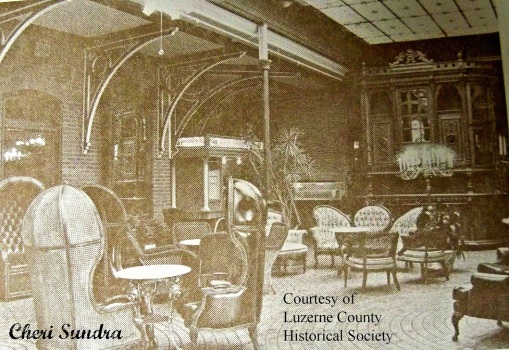
The Marvin Roth Station
By the time renovations were complete, there were more than 60 railroad cars on the site that Mr. Roth named the “Choo-Choo Inn”. It provided 90 private rooms for overnight accommodations. Inside were brass beds, Victorian-style furniture and overhead fans. In 1987, the tab for a night in a restored rail car was less than $50. In an interview from the same year, Mr. Roth said “people love the overnight stay in the ambiance of our sleeping cars. It’s an experience they like to recount to their friends and relatives back home.”
To further explain the ambience, The Los Angeles Times ended the article with:
“The depot, called The Station, is used for dining and dancing. Its freight platform was converted into a tavern called “Gandy Dancer” after track workers, making it one of Wilkes-Barre’s most unusual night spots. Outside The Station entrance is an old red-and-white crossing watchman’s shanty and nearby, a signalman’s tower. A side-tracked locomotive now and then sounds its whistle to reacquaint visitors with what used to be.”
Then in December of 1987, The Playboy Steakhouse, with a licensing arrangement with Playboy for an undisclosed fee, opened at the Station Complex, employing 30 women as Playboy Bunnies.
(Admit it, if you are from Wilkes-Barre and part of Generation X or later, you are thinking “We had freakin’ Beer, Peanuts, the Golden Era of Train Travel AND an internationally known concept like Playboy Bunnies, which still enjoys tremendous popularity today?!….how did we NOT become a tourism hot-spot?” Mr. Peanut Guevara is still waiting for The Revolution to begin…..)
During the 1960s and 1970s, Playboy Clubs were considered the height of citified elegance – or at least opulence. In a 1988 interview, Station manager Jack Cantor said, “We were looking for a new concept to liven up the place. Wilkes-Barre had only read and heard about Playboy clubs. Now we have the concept here.”
“We just want to be brand-new in every way,” said Robert Habeeb, the Steak House’s director of food and beverages, in that same interview. “It’s a revival of the Playboy idea, in a popularly priced restaurant, for the general public. Look, like Philadelphia, Wilkes-Barre has the image of being a little prudish,” said Habeeb. “When Playboy clubs were at their height, it never would have flown here. We’re ready for this kind of thing now. The Playboy standard of service is something this town has never seen.”
Apparently, not everyone in the small town was ready to embrace the Playboy Bunny-themed affordable restaurant. “We had a local minister writing lots of letters to the newspapers when we started hiring bunnies in November and we got a little flak when we opened because it was in the middle of the Jessica Hahn deal,” admitted Habeeb in that interview. Ironically, newspaper accounts mentioned the local desire to attract other “themed” restaurants, such as Bennigan’s, to act as “tourist magnets” instead of the Playboy franchise.
The Playboy Steakhouse days in Wilkes-Barre were short lived. Just six months later, in June of 1988, Thom Greco, Rick Kornfeld and Mitch Kornfeld entered into a lease-purchase agreement with Marvin Roth’s Revel Railroad Company, which operated the Station Complex. (Two years later, Marvin Roth suffered a heart attack and died) Shortly afterward it became very apparent that they did not support Roth’s vision for the facility at all. First they banished the Bunnies.
 The Station Kitchen: Post-Roth-Restoration
The Station Kitchen: Post-Roth-Restoration
Photo courtesy of George Foster
The new owners said the image change would not only recognize the emergence of feminism but would also broaden the establishment’s clientele. “A lot of times, husbands would stay in the rooms,” Mitch Kornfeld said, “and wives would call up and say, ‘You’re staying in the Playboy club?”
Photo courtesy of Katherine Rogers
In June of 1988 Mitch Kornfeld told the Inquirer, “It didn’t work in New York or Chicago, why would it work in Wilkes- Barre? It’s a little passé. If we were in the late ’70s it would work, but we’re in the ’80s. Women are just different. People are different.”
Photo courtesy of Katherine Rogers
The new owners decided to get rid of the Playboy franchise in order to open a new restaurant and nightclub called Norma Jeane’s. They renamed the entire facility Market Street Square. The complex remained open through the 1990s, touting a succession of different nightclub and restaurants names, with none of them ever really becoming successful ventures. At least not successful enough to keep the place open for very long.
Photo courtesy of the League of Gentlemen Explorers
In 1991, The Morning Call reported that the new owners were experiencing some drawbacks attributed to having 90 guest rooms in train cars. “The cars are narrow, require a great deal of maintenance because they are exposed to weather, and are expensive to heat and cool. Also, guests have to go outdoors to get from their rooms to the restaurants, nightclubs or lobby. Some older people don’t like having to use steps to get to their rooms.”
The Kornfelds walked away from the business arrangement in 1992, while “entertainment magnate” Thom Greco remained involved. By 1994, the “Choo-Choo Inn” was closed for good. The entire complex shut down completely in 2001, just 24 years after Marvin Roth rescued the train station from demolition by purchasing the property it sits on for $80,000, and investing more than $3 million dollars of his own money into restoration.
Photo courtesy of the League of Gentlemen Explorers
In 1999 it was reported by the Times Leader that within that past year, city firefighters were often called to put out fires at the abandoned “Choo-Choo Inn” because homeless squatters were igniting items to keep warm, or vandals were setting fires inside the cars. In an interview at that time, Fire Chief Bruce Reilly said that he’s afraid one of his firefighters will get hurt responding to those train car fires. “Some have Plexiglas windows,” he said. “You can’t bust them. Every time they get boarded up, somebody breaks into them.”
The mayor at that time, Tom McGroarty, who seemed ambivalent about the history of the property in newspaper interviews, just wanted the cars removed. A youngster when the motel first opened, the mayor stated in 1999 that he only “kind of” remembers the inn and described the area as nothing but a mess. He gave Greco until October of 2002 to remove the train cars from the property.
On March 30, 2002, according to the Citizens’ Voice, Greco was still looking for new owners for the splendid rail-cars that Mr. Roth so carefully restored as a gift to the citizens of Wilkes-Barre. He had to clear the property and pay off back-taxes. The cars were now “eyesores, attractions for the homeless and fire hazards”, according to the newspaper.
Greco noted that a great deal of money had gone into renovating the railcars to bring them back to their historical nature. “When we closed the hotel”, he said in that interview, “they were in perfect shape. We didn’t put the graffiti on them, set fires or steal from the rooms. We once had a historic area”, he added, “Unfortunately, the railcars ended up in this condition because the people here destroyed them. They were redone and the community destroyed them.” It should also be noted that Greco obviously did very little himself, as the owner, to protect these treasures in his possession from vandals, thieves and homeless people, who don’t exactly view themselves as part of “the community”.
Today, for the second time in history, the fate of the little train station (which again sits abandoned, in ruins, unsecured, plagued by vandals and quickly deteriorating) is back in the hands of the Luzerne County Redevelopment Authority— just like it was, pre-Marvin Roth Rescue.
Photo courtesy of Katherine Rogers
In 2006, the Luzerne County Redevelopment Authority purchased the property from Thom Greco, becoming its owner for the second time using $5.8 million in taxpayer funded federal community development money. Since this is Northeastern Pennsylvania, where nothing seems to occur in local government without a scandal, the deal also included $10,000 in the form of television sets that were allegedly a “reward” from Greco to a county commissioner for his influence in making the sale happen. The TVs were to be used in a family owned sports bar and led to all kinds of legal implications for the people involved.
Photo courtesy of the League of Gentlemen Explorers
A recent appraisal of the property estimated that it is now only worth about $1.88 million, which is significantly less than what the county paid to acquire it.
Photo courtesy of the League of Gentlemen Explorers
Current plans for the train station include seeking a commercial real estate firm to market the historic property. In 2012, county manager Robert Lawton said he did not support a prior county decision to spend $2 million renovating the station. He asked the redevelopment authority to consider selling the train station and adjoining properties to a private owner (again). The Authority opened a competitive bidding period on the property. They received absolutely no offers from anyone.
Last July, Wilkes-Barre demolished another landmark structure, the Hotel Sterling, after a failed, government-funded attempt to preserve and market the structure.
Time is quickly running out (again) for the little train station in Wilkes-Barre. The current owner obviously cannot afford to even secure the property from further vandalism since the extent of their security measures begins and ends with a maintenance worker checking the property, along with other rail properties on “most days”, according to reports in the Times Leader. It is speculated that homeless people currently use the building for shelter during inclement weather. There are also an awful lot of feral cats living there.
Photo courtesy of the League of Gentlemen Explorers
Post-Marvin Roth Restoration, we live in a different age now, when historic preservation projects are often viewed as “money grabs” by developers nationwide just seeking to exhaust government grants before the buildings are ultimately demolished, just like the Hotel Sterling, simply because there rarely seems to be enough funding available to complete these kinds of projects in their entirety, without additional funding from private sources.
Cheri Sundra–Guerrilla Historian
When Marvin Roth purchased the train station while it was endangered the first time, he said, “I bought it because I was infatuated with the building, and I made it my hobby. I never went into it as a money maker. It’s not a business.” Unfortunately, for the train station, it ultimately ended up in the care of community members who were ONLY interested in the bottom line and nothing else.
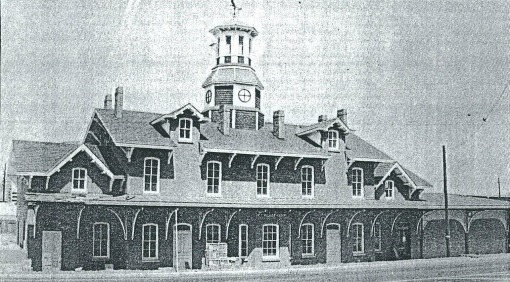
Marvin Roth Wilkes-Barre Historical Train Station Restoration Project
Sadly, there just aren’t many people in the world like Marvin Roth. I wish my hometown had better managed his efforts to save our history when we had the chance.
Historical structures are lucky to get saved once, what are the chances that it can happen twice?

The sign reads:
MARVIN ROTH, A LOCAL ENTREPRENEUR, REHABILITATED THIS EDIFICE
SO POSTERITY MAY FOREVER ENJOY ITS PRESENCE. AUGUST 15, 1980
Photo courtesy of Katherine Rogers
~*~*~
Photo courtesy of the League of Gentlemen Explorers
~*~*~
The Station “Library Room” : Post-Roth-Restoration
Photo courtesy of George Foster
~*~*~
~*~*~
~*~*~
Photo courtesy of Katherine Rogers
~*~*~
~*~*~
~*~*~

The Station: Post-Roth-Restoration
~*~*~*~
~*~*~
~*~*~
~*~*~
~*~*~
~*~*~
The Station: Post-Roth-Restoration
Photo courtesy of George Foster
~*~*~
~*~*~
~*~*~
The Station: Post-Roth-Restoration
Photo courtesy of George Foster
~*~*~*~
~*~*~
~*~*~*~
~*~*~
~*~*~*~
~*~*~
~*~*~
~*~*~*~
~*~*~*~
Photo courtesy of George Foster
~*~*~*~
RETURN TO
GUERRILLA HISTORY TABLE OF CONENTS
Cheri Sundra © 2014
All Rights Reserved


